What is UNIFIL?
The United Nations peacekeeping force has been in Lebanon since 1978, but today they are threatened by Israel.

The Israeli military has fired on the United Nations Interim Force in Lebanon (UNIFIL), international peacekeepers in Lebanon, according to a UN statement.
“This morning, two peacekeepers were injured after an IDF [Israeli army] Merkava tank fired its weapon toward an observation tower at UNIFIL’s headquarters in Naqura [Naqoura], directly hitting it and causing them to fall,” a UNIFIL spokesperson said on Sunday.
Israel confirmed its “military presence” in the area, claiming that it was engaging with Hezbollah fighters who were near the UN positions.
What is UNIFIL?
UNIFIL is a peacekeeping mission established by the UN Security Council (UNSC) in March 1978, days after Israel invaded Lebanon.
The UNSC passed Resolutions 425 and 426, calling on Israel to withdraw from Lebanon. They also decided to set up UNIFIL.
According to the decision that set it up, UNIFIL was deployed to Lebanon to fulfil three objectives: “Confirming the withdrawal of Israeli forces, restoring international peace and security, assisting the Government of Lebanon in ensuring the return of its effective authority in the area”.
Because UNIFIL’s area of focus is in the south of Lebanon, near the Israel border, it is present in several locations traditionally associated with the powerful Lebanese group Hezbollah.
So are they soldiers?
No.
The individual peacekeepers may have been soldiers in their home country. But on peacekeeping missions, they do not engage in combat.
Peacekeepers have to remain impartial and can only be present with the consent of the nation to which they are deployed.
According to the UN: “Today’s multidimensional peacekeeping operations … not only maintain peace and security but also facilitate the political process, protect civilians, assist in the disarmament, demobilization and reintegration of former combatants, support the organisation of elections, protect and promote human rights and assist in restoring the rule of law.”
How big is UNIFIL?
UNIFIL comprises more than 10,000 peacekeepers from 50 nations. As of September 2, they were:
- Indonesia – 1,231
- Italy – 1,068
- India – 903
- Nepal – 876
- Ghana – 873
- Malaysia – 833
- Spain – 676
- France – 673
- China – 418
- Ireland – 370
- Republic of Korea – 294
- Poland – 213
- Finland – 205
- Cambodia – 185
- Serbia – 182
- Austria – 165
- Greece – 131
- Sri Lanka – 126
- Tanzania – 125
- Bangladesh – 120
- Germany – 112
- Turkey – 92
- El Salvador – 52
- Moldova – 32
- Brunei – 29
- Hungary – 15
- Brazil – 11
- Malta – 9
- Republic of North Macedonia – 5
- Mongolia – 4
- Argentina, 3
- Kenya – 3
- Latvia – 3
- Sierra Leone – 3
- Cyprus – 2
- Guatemala – 2
- Zambia – 2
- Armenia – 1
- United Kingdom – 1
- Colombia -1
- Croatia – 1
- Estonia – 1
- Fiji – 1
- Kazakhstan – 1
- Malawi – 1
- The Netherlands – 1
- Nigeria – 1
- Peru – 1
- Qatar – 1
- Uruguay – 1
It also has about 800 civilian staff worldwide.
Where is it in Lebanon?
In the south.
UNIFIL’s presence stretches from the Litani River to the Blue Line.
That area is 1,060sq km (409sq miles), throughout which UNIFIL has 50 positions. Its headquarters are in Naqoura in the southwest.

What’s the Blue Line?
Established in 2000, the Blue Line is a 120km (75-mile) “border” drawn up by the UN between Lebanon and Israel.
Its main purpose is to confirm the withdrawal of the Israeli army from Lebanese territory as mandated by UNSC Resolutions 425 and 426.
So how does it work?
According to its mission and to keep the peace along the Blue Line, Israeli and Lebanese authorities are required to provide UNIFIL with advance notification for any activities in its vicinity.
This includes routine maintenance work and security operations.
This protocol helps UNIFIL effectively monitor and manage the sensitive border region.

Was it just in 1978 that UNIFIL had to act?
No, there have been a few wars that UNIFIL worked through.
In 1982, Israel invaded Lebanon again, going all the way north to Beirut and occupying all of the south.
Until the invasion ended in 1985, UNIFIL was behind the Israeli lines, limited in its role to protecting the people in the south and providing humanitarian assistance wherever possible.
In 2006, Israel entered south Lebanon again in a war against Hezbollah that lasted about a month.
In August of that year, UN Resolution 1701 was passed to resolve the conflict between Hezbollah and Israel, hoping to ensure a lasting ceasefire around a demilitarised buffer zone.

